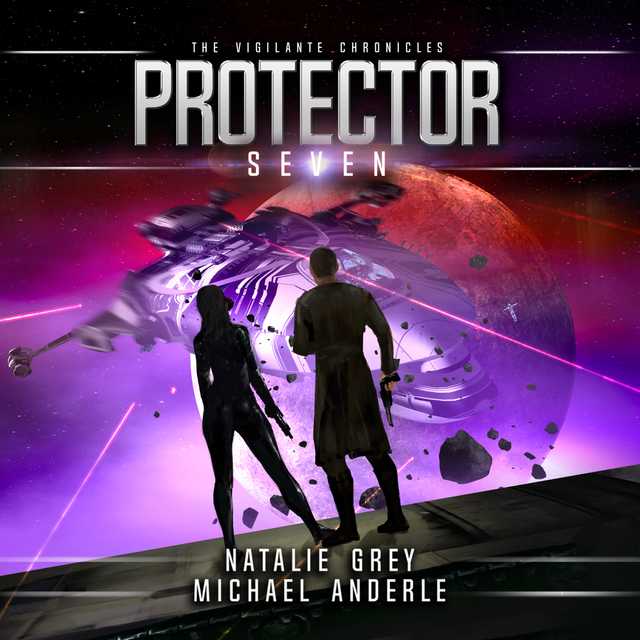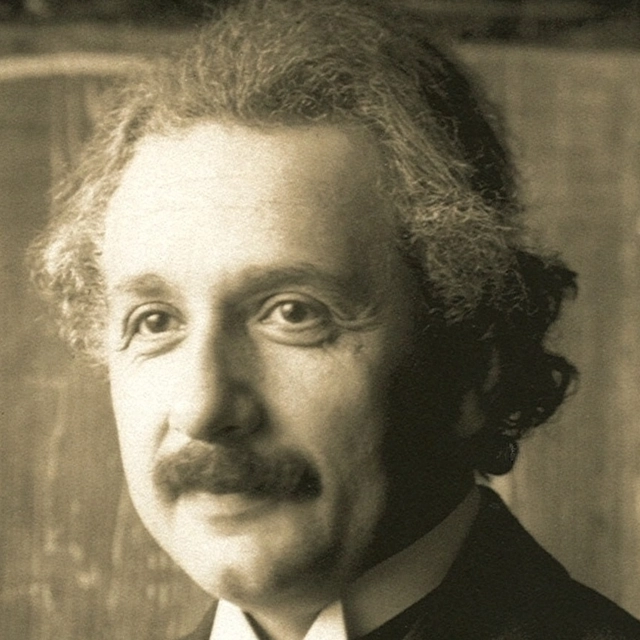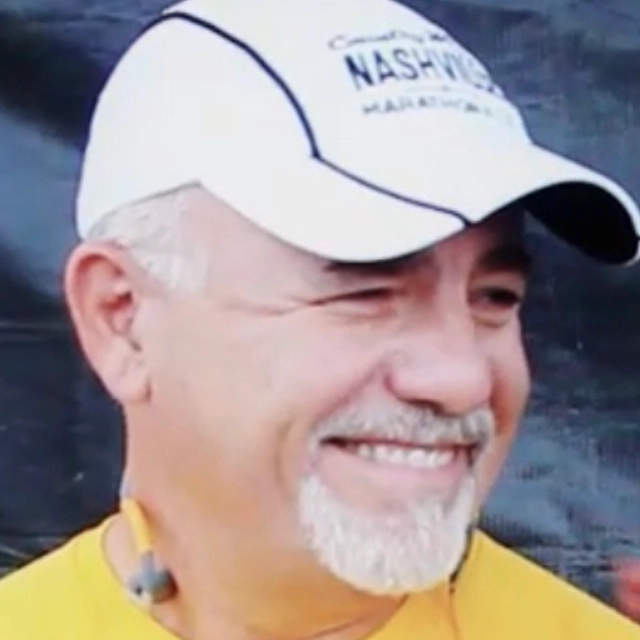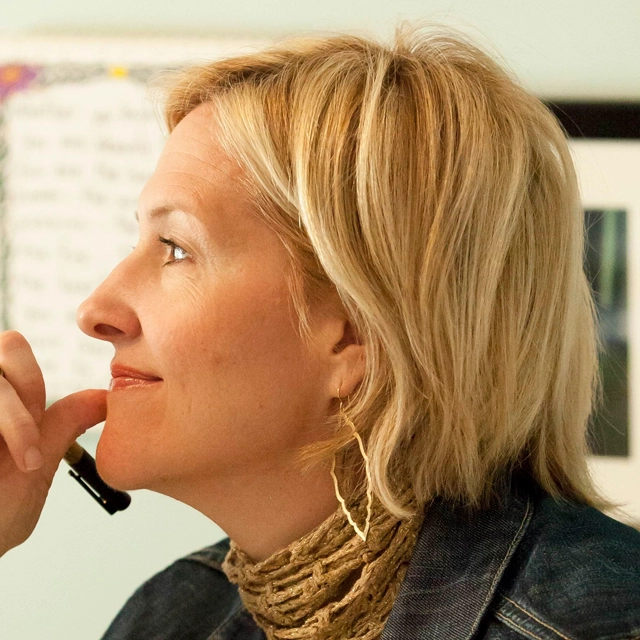Barracoon Audiobook Summary
A major literary event: a never-before-published work from the author of the American classic Their Eyes Were Watching God that brilliantly illuminates the horror and injustices of slavery as it tells the true story of one of the last known survivors of the Atlantic slave trade–abducted from Africa on the last “Black Cargo” ship to arrive in the United States.
In 1927, Zora Neale Hurston went to Plateau, Alabama, just outside Mobile, to interview eighty-six-year-old Cudjo Lewis. Of the millions of men, women, and children transported from Africa to America as slaves, Cudjo was then the only person alive to tell the story of this integral part of the nation’s history. Hurston was there to record Cudjo’s firsthand account of the raid that led to his capture and bondage fifty years after the Atlantic slave trade was outlawed in the United States.
In 1931, Hurston returned to Plateau, the African-centric community three miles from Mobile founded by Cudjo and other former slaves from his ship. Spending more than three months there, she talked in depth with Cudjo about the details of his life. During those weeks, the young writer and the elderly formerly enslaved man ate peaches and watermelon that grew in the backyard and talked about Cudjo’s past–memories from his childhood in Africa, the horrors of being captured and held in a barracoon for selection by American slavers, the harrowing experience of the Middle Passage packed with more than 100 other souls aboard the Clotilda, and the years he spent in slavery until the end of the Civil War.
Based on those interviews, featuring Cudjo’s unique vernacular, and written from Hurston’s perspective with the compassion and singular style that have made her one of the preeminent American authors of the twentieth-century, Barracoon brilliantly illuminates the tragedy of slavery and of one life forever defined by it. Offering insight into the pernicious legacy that continues to haunt us all, black and white, this poignant and powerful work is an invaluable contribution to our shared history and culture.
Other Top Audiobooks
Barracoon Audiobook Narrator
Robin Miles is the narrator of Barracoon audiobook that was written by Zora Neale Hurston
Zora Neale Hurston was a novelist, folklorist, and anthropologist. She wrote four novels (Jonah’s Gourd Vine, 1934; Their Eyes Were Watching God, 1937; Moses, Man of the Mountain, 1939; and Seraph on the Suwanee, 1948); two books of folklore (Mules and Men, 1935, and Tell My Horse, 1938); an autobiography (Dust Tracks on a Road, 1942); an international bestselling nonfiction work (Barracoon: The Story of the Last “Black Cargo,” 2018); and over fifty short stories, essays, and plays. She attended Howard University, Barnard College, and Columbia University and was a graduate of Barnard College in 1928. She was born on January 7, 1891, in Notasulga, Alabama, and grew up in Eatonville, Florida.
About the Author(s) of Barracoon
Zora Neale Hurston is the author of Barracoon
More From the Same
- Publisher : HarperAudio
- Abraham
- American Gods [TV Tie-In]
- Dead Ringer
- House of Sand and Fog
- Prey
Barracoon Full Details
| Narrator | Robin Miles |
| Length | 3 hours 50 minutes |
| Author | Zora Neale Hurston |
| Category | |
| Publisher | HarperAudio |
| Release date | May 08, 2018 |
| ISBN | 9780062748232 |
Subjects
The publisher of the Barracoon is HarperAudio. includes the following subjects: The BISAC Subject Code is Slavery, Social Science
Additional info
The publisher of the Barracoon is HarperAudio. The imprint is HarperAudio. It is supplied by HarperAudio. The ISBN-13 is 9780062748232.
Global Availability
This book is only available in the United States.
Goodreads Reviews
Will
December 28, 2021
“…I want to ask you many things. I want to know who you are and how you came to be a slave; and to what part of Africa do you belong, and how you fared as a slave, and how you have managed as a free man?”…when he lifted his wet face again he murmured, Thankee Jesus! Somebody come ast about Cudjo! I want tellee somebody who I is, so maybe dey go to tell everybody whut Cudjo says, and how I come to Americky soil since de 1859 and never see my people no mo’. “ Barracoon - An enclosure in which black slaves were confined for a limited period.-Oxford English DictionaryBefore she was a world-renowned novelist, Alabama-born and Florida-raised Zora Neale Hurston was an anthropologist, an ethnographer, a researcher into the history and folklore of black people in the American South, the Caribbean, and Honduras. She was a central figure in the Harlem Renaissance, producing works of fiction in addition to her anthropological work. Cudjo at home – from History.com - (Credit: Erik Overbey Collection, The Doy Leale McCall Rare Book and Manuscript Library, University of South Alabama)It was during this period that she first met the last known black man transported from Africa to America as a slave, Cudjoe Lewis. She interviewed Lewis, then in his 80s, in 1927, producing a 1928 article about his experiences, Cudjoe’s Own Story of the Last American Slaver. There were some issues with that report, including a serious charge of plagiarism. Hurston returned to Lewis in Africatown, Alabama, to interview him at length. It is these interviews that form the bulk of her book, Barracoon, plagiarism no longer being at issue.Zora Neale Hurston - image from SmithsonianHer efforts to publish the book ran into some cultural headwind, publishers refused to proceed so long as her subject’s dialogue was presented in his idiomatic speech. Thurston refused to remove this central element of the story, and so the book languished. But the Zora Neale Trust did not give up, and a propitious series of events seemed to signal that the time was right Last fall, on the PBS genealogy series Finding Your Roots, the musician Questlove learned that he descends from people brought over on the Clotilda. Then an Alabama reporter named Ben Raines found a wreck that looked to be the scuttled ship; it wasn’t, but the story made national news….[while] Kossola’s relevance goes beyond any headlines, [there are also] noteworthy links there: one of Kossola’s sons is killed by law enforcement, and his story holds a message about recognizing humanity echoed by Black Lives Matter. - from Time Magazine articleThen there is the story itself. Hurston gets out of the way, acting mostly as Cudjoe’s stenographer and editor, reporting his words as he spoke them. It is a harrowing tale. A young village man in 1859, Kossula (his true name) was in training to learn military skills when his community was attacked by a neighboring tribe. His report of the attack is graphic, and gruesome. Many of those who survived the crushing assault were dragged away and sold to white slave traders. (Definitely not their choice, Kanye) We learn of his experiences while awaiting his transportation, his telling of the Middle Passage, arrival in America and his five years as a slave. He tells, as well, of the establishment of Africatown, after the Civil War ended the Peculiar Institution in the United States, and of the travails of his life after that, having and losing children, running up against the so-called legal system, but also surviving to tell his tale, and gaining respect as a storehouse of history and folklore. This is an upsetting read, rage battles grief as we learn of the hardships and unfairness of Kossula’s life. “Oh Lor’, I know it you call my name. Nobody don’t callee me Kossula, jus’ lak I in de Affica soil!” The book stands out for many reasons. Among them is that it is one of very few reports of slavery from the perspective of the slave. There are many documents available that recorded the transactions that involved human cargo, and many reports by slavers, but precious little has been heard from the cargo itself. It is also a significant document in teaching us about the establishment of Africatown, a village set up not by African Americans, but by Africans, Cudjoe and his fellow former slaves. The stories Cudjoe tells are often those he learned in his home culture. 'The Brookes' Slave Ship Diagram – from the British LibraryBarracoon is a triumph of ethnography, bringing together not only a first-person report on experiences in African slave trading, but reporting on slavery from a subject of that atrocity. In addition Kossula adds his triumphant account of joining with other freed slaves to construct an Africa-like community in America, and offers as well old-world folklore in the stories he recalls from his first nineteen years. It is a moving tale for Hurston’s sensitive efforts to reach across the divide of time to encourage Kossula to relive some of the darkest moments any human can experience, sitting with him, calm, caring, and connecting. And finally, it is a truly remarkable tale Kossula tells. It will raise your blood pressure, horrify you, and encourage bursts of tears. You think you’ve had it tough? And for this man to have endured with such dignity and grace is a triumph all its own. Commemorative Marker for Cudjo Lewis – Plateau Cemetery, Africatown, Mobile, AL - image from wikiThe text of the story is short, but Kossula’s tale is epic. Editor Deborah G. Plant has added a wealth of supportive material, including parables and old-world stories Kossula told to his descendants and to residents of Africatown, a description of a children’s game played in his home town in Africa, and background material on Hurston, her professional issues with an earlier piece of work, and her involvement with the Harlem Renaissance, without touching much on Hurston’s unexpected political perspective on segregation. The information adds to our appreciation of the book. Cudjo with great-grand-daughters twins Mary and Martha, born in 1923 - image from Doy Leale McCall Rare Book and Manuscript Library, University of South AlabamaThe ethnographical research Hurston did bolstered a perspective on African culture that different was not inferior, that African culture had great value, regardless of those who believed only in Western superiority. Long before Jesse Jackson, such research proclaimed “I am somebody.” The research Hurston did in the USA, Caribbean and Central America certainly informed and strengthened the portraits she painted in her fiction writing. The history of slavery is a dark one, however much light has been shone on it in the last century and a half. This moving, upsetting telling of a life that endured it is a part of that history. That this 80-year-old nugget has been buried under the weight of time is a shame. But there is an upside. The pressure of all those years has created something glistening and wonderful for us today, a diamond of a vision into the past. Review posted – 5/25/18Publication date -----5/8/2018 - hardcover-----1/7/20 - Trade paperback=============================EXTRA STUFFVIDEO-----A film shot by ZNH – Cudjoe appears in the opening scene----- On the unveiling of a bust of Cudjoe in Africatown - WKRG in Mobile – it also ncludes an interview with Israel Lewis, one of Kossula’s descendants-----A contemporary profile of Africatown and the challenges it faces, particularly from hazardous industry nearbyEXTRA READING-----Emma Langdon Roche’s 1914 book, Historic Sketches of the South, includes much on the Clotilde-----Wiki on Cudjoe - includes images from E.L. Roche-----Smithsonian Magazine – May 2, 2018 - Zora Neale Hurston’s ‘Barracoon’ Tells the Story of the Slave Trade’s Last Survivor - by Anna Diamond----- History.com piece on ZNH’s work on Barracoon - The Last Slave Ship Survivor Gave an Interview in the 1930s. It just Surfaced by Becky Little – (the interviewing was actually done in the 1920s)-----Bitfal Entertainment - A pretty nice brief summary of Cudjoe’s experience, with many uncaptioned illustrations-----Time Magazine - Zora Neale Hurston’s Long-Unpublished Barracoon Finds Its Place After Decades of Delay - by Lily Rothman----- On the slave ship Clotilda-----NY Times - May 26, 2019 - ‘Ship of Horror’: Discovery of the Last Slave Ship to America Brings New Hope to an Old Community - By Richard Fausset-----National Geographic - January, 2020 - America’s last slave ship stole them from home. It couldn’t steal their identities. - much more information about the Clotilda's criminal mission, and about the lives of the men and women it transported and their descendants-----Nw York Times - Last Known Slave Ship Is Remarkably Well Preserved, Researchers Say by Michael LevensonAUDIO-----NPR’s Lynn Neary talks with Amistad’s editorial director Tracy Sherrod, and Barracoon’s editor Deborah Plant - In Zora Neale Hurston’s ‘Barracoon’ Language is the Key to Understanding - Definitely listen to the entire interview. It is under four minutes. One wonderful benefit is to get a sample of the audio reading of the book, which sounds amazing. Tracy Sherrod is the editorial director of Amistad at Harper Collins, which is now publishing the book. She says Hurston tried to get it published back in the 1930s, but the manuscript was rejected. "They wanted to publish it," Sherrod says, "but they wanted Zora to change the language so it wasn't written in dialect and more in standard English. And she refused to do so."Hurston refused, says Deborah Plant, because she understood that Lewis's language was key to understanding him. "We're talking about a language that he had to fashion for himself in order to negotiate this new terrain he found himself in," she says. "Embedded in his language is everything of his history. To deny him his language is to deny his history, to deny his experience — which ultimately is to deny him, period. To deny what happened to him."
Emily May
October 04, 2022
How does one sleep with such memories beneath the pillow? How does a pagan live with a Christian God? How has the Nigerian “heathen” borne up under the process of civilization?I was sent to ask. Barracoon only came to my attention after I recently watched "The Woman King" trailer and found my way to some of the criticisms. It's a book that remained unpublished for years; Hurston's interview with one of the final remaining survivors of the Atlantic slave trade. The movie controversy is about the glorifying of the Dahomey people of Africa (those with the infamous all-female military unit known as Amazons) when, in truth, they were responsible for capturing the people of neighbouring kingdoms and selling them off to white slavers. Granted, critiques and calls for boycotting have come from people who have not seen the movie, but it doesn't look great.It relates to this book because Cudjo Lewis (or Oluale Kossola, as was his birth name) was one of those captured by the Dahomey. He tells how he and others were dragged away from their home and families, some murdered, some imprisoned in barracoons, then presented to U.S. Captain William Foster for his selection. Cudjo was enslaved and later freed in Alabama, where he and others founded a community known as Africatown.The book apparently struggled to find a publisher because Hurston writes out Cudjo's vernacular, which I personally think adds an authenticity to the narrative. It might be a struggle for those not fully fluent in English, but otherwise I think it is not difficult to understand. For example: Soon we git in de ship dey make us lay down in de dark. We stay dere thirteen days. Dey doan give us much to eat. Me so thirst! Dey give us a little bit of water twice a day. It's an extraordinary and awful life story.
Barbara
July 31, 2021
Though the United States passed the 'Act Prohibiting Importation of Slaves in 1807', boats continued to deliver abducted Africans to America for more than 50 years. The last shipment of slaves arrived in Alabama on the ship 'Clotilda' in 1860, on the eve of the Civil War.One of the African men on the Clotilda was Oluale Kossula, also known as Cudjo Lewis, who survived five years of slavery, became a free man, and helped found the black enclave of 'Africatown' (or 'Plateau') near Mobile, Alabama.In 1927, when Cudjo was in his mid-eighties, he was interviewed by Zora Neale Hurston - the American folklorist, anthropologist, and author. In this book Hurston relates Cudjo's story, much of it in his own words.Cudjo LewisZora Neale Hurston*****Cudjo describes his ancestry and his early life in the African village of Takkoi, where he was happy with his family and friends. Then, when Cudjo was 19, his village was invaded by warriors from nearby Dahomey, who killed some residents and kidnapped others to sell to white slavers. "De King of Dahomey, you know, he got very rich ketchin slaves. He keep his army all de time making raids to grabee people to sell." The scene Cudjo describes is horrific: "Dey got de women soldiers too and dey run wid de big knife and dey ketch people and saw de neck wid de knife den dey twist de head so it come off de neck. Oh Lor', Lor'! I see de peoples gittee kill so fast! Cudjo's village was located in what is now BeninThe white slavers housed the Africans in a barracoon near the ocean, until 65 men and 65 women were loaded onto the Clotilda and brought to Mobile, Alabama. There they were split up among the slavers, who kept some Africans for themselves and sold the others. "We seventy days cross de water from de Affica soil, and now dey part us from one ’nother. Derefore we cry. Our grief so heavy look lak we cain stand it. I think maybe I die in my sleep when I dream about my mama."A barracoonCudjo talks about his life as a slave, which was difficult for several reasons. The work was very hard and the new African slaves didn't mesh well with those already living in the country. "In night time we cry, we say we born and raised to be free people and now we slave. We doan know why we be bring ’way from our country to work lak dis. It strange to us. Everybody lookee at us strange. We want to talk wid de udder colored folkses but dey doan know whut we say. Some makee de fun at us.” After emancipation, a group of freed slaves - who couldn't raise the money to return home - established Africatown ("We call our village Affican Town") near Mobile, Alabama. Cudjo married a woman named Seely, 'unofficially' at first, then - after they joined the church - with a proper license. "So den we gittee married by de license, but I doan love my wife no mo' wid de license than I love her befo' de license. She a good woman and I love her all de time. Shacks in AfricatownAfricatown is now a tourist attractionCudjo and Seely had six children (fives boys and a girl). "Oh, Lor’! Oh, Lor’! We so happy. We been married ten months when we have our first baby. We call him Yah-Jimmy, just de same lak we was in de Afficky soil. For Americky we call him Aleck." Along with other residents of Africatown, Cudjo sought to educate his offspring. “We Afficans try raise our chillun right. When dey say we ign’nant we go together and build de school house. Den de county send us a teacher. We Afficky men doan wait lak de other colored people till de white folks gittee ready to build us a school. We build one for ourself den astee de county to send us de teacher.” Residents of AfricatownCudjo's children had a difficult time living in America. "All de time de chillun growin’ de American folks dey picks at dem. Dey callee my chillun ig’nant savage and make out dey kin to monkey. Derefo’, my boys dey fight. Dey got to fight all de time.....When dey whip de other boys, dey folks come to our house and tellee us, “Yo’ boys mighty bad, Cudjo. We ’fraid they goin’ kill somebody.”" This violence may have contributed to some of the children's unfortunate ends.One son was killed by a law enforcement officer. "Somebody call hisself a deputy sheriff kill de baby boy now.... If my boy done something wrong, it his place come ’rest him lak a man....He have words wid my boy, but he skeered face him. Derefo’, you unnerstand me, he hidee hisself in de butcher wagon and when it gittee to my boy’s store....Dis man, he hidin’ hisself in de back of de wagon, an’ shootee my boy." A second son was hit by a railroad train, but the company offered no compensation. (A lawyer later helped Cudjo sue for recompense, but Cudjo didn't see a penny of the money.) Of the four remaining children, three died of illnesses, and one mysteriously disappeared. When Hurston interviewed Cudjo, Seely had also been dead for 20 years, perhaps from a broken heart.It's clear from the book that Cudjo had a very difficult life, traumatized by the barbarity of slavery and devastated by its subsequent consequences, including discrimination, bigotry, and aggression towards the communities and families of black people. Cudjo's story is both moving and disturbing, and demonstrates how some things in the United States haven't changed enough.*****To earn Cudjo's goodwill, Hurston would bring him Georgia peaches, watermelon, and once a Virginia ham. Over the course of many visits, Hurston also helped Cudjo clean the church where he was a sexton, worked in his garden, and drove him to buy crabs. Hurston notes: “I had spent two months with Kossula, who is called Cudjo, trying to find the answers to my questions. Some days we ate great quantities of clingstone peaches and talked. Sometimes we ate watermelon and talked. Once it was a huge mess of steamed crabs. Sometimes we just ate. Sometimes we just talked. At other times neither was possible, he just chased me away. He wanted to work in his garden or fix his fences. He couldn't be bothered. The present was too urgent to let the past intrude. But on the whole, he was glad to see me, and we became warm friends.” Cudjo in his cabinThe end of the book contains Cudjo's recitation of several African folktales, which are sly and amusing. This is an interesting book, recommended to readers interested in African history, slavery, and anthropology.You can follow my reviews at https://reviewsbybarbsaffer.blogspot....
Sue
January 27, 2019
How to rate and review a book that has no real comparison or companion, that has been my quandary since finishing Barracoon. The rating is for the very fact of its existence, for Zora Neale Hurston’s truly wonderful and difficult work of taking down Cudjo Lewis’s story of childhood, capture, sale to slavers, and transport across the Atlantic on the last slave ship to reach the United States in 1859, and of his life after the freedom granted during the Civil War up to the 1920s.As Kossula (Cudjo Lewis’s approximated birth name) tells his life story to Hurston, we learn details of the history of the area of Africa in which he lived, the facts of black Africans selling those they had defeated in war to traders from the Americas, life in Africatown, Alabama (all like Cudjo, from that last ship), a glossary providing detailed information on major people and events in the biography, and extended notes.There are are scholarly issues discussed in some of the introductory material that may add to why this material has not been published sooner, a question of plagiarism in aspects of this work from an earlier historical report. This is discussed from many viewpoints and ultimately appears, if memory serves, may have been an oversight in an article not finalized by the author for publication. Since she has written many other works without this issue arising, it would appear that the decision has been made that this work needed to be published. On another note, personally, I didn’t have difficulty reading Cudjo’s dialect, as written down by Hurston. But I know that many have enjoyed listening to this book rather than reading it. I do recommend you try it in one form or the other.Postscript: another note re this late publication. Apparently, Hurston attempted to have this piece published in the 1930s. At the time, the publisher wanted Hurston to translate Lewis’s dialect into standard English. She refused as this would have denied the essence of his identity. It was not accepted for publication.
Raymond
October 03, 2019
"The present was too urgent to let the past intrude." -Hurston's description of howHurston's posthumous book is very good. Cudjo Lewis tells his story to Hurston about his life in Africa, being sold into slavery, the Middle Passage, life as a slave, and his life after obtaining his freedom. I found Lewis' story captivating, I enjoyed reading it in his own words and dialect. His constant "you unnerstand me" made his storytelling more genuine. At times I felt like I was there as he was telling Hurston about his journey. There were three episodes that spoke the most to me: 1. After he gained his freedom, Cudjo and his friends asked their former master for land: "Cap'n Tim, you bought us from our country where we had lan'. You made us slave. Now dey make us free but we ain' got no country and we ain' got no lan'! Why doan you give us piece dis land so we kin buildee ourself a home?" This quote made me think about the debate over reparations then and now.2. In this episode Cudjo references the challenges his children faced: "All de time de chillun growin' de American folks dey picks at dem and tell de Afficky people dey kill folks and eatee de meat. Dey callee my chillun ig'nant savage and make out dey kin to monkey." This quote reminded me of the negative stereotypes Americans still have of immigrants especially from Africa.3. In this episode Cudjo references one of his son's interaction with a police officer: "He shootee my boy in de throat. He got no right shootee my boy. He make out he skeered my boy goin' shoot him and shootee my boy down in de store. Oh, Lor'!" This quote, not surprisingly, reminded me of the current issues between young Black Americans and the police.I read that this book was never published initially because publishers did not like Cudjo's dialect and they wanted Hurston to write it in more refined English. It probably was for the best that she did not change the dialect because the essence of Cudjo's story would have been removed. Sometimes the best books are those that are newly discovered years after it was written so that we in the current time and get an unaltered view of the past.
Heidi
January 28, 2019
Zora Neale Hurston interviewed Oluale Kossola before he died in the 1930's to create this first-person narrative by one of the last people to be transported to the United States through the middle passage. It is interesting in that, among the existing records of that period in time, it is written from the perspective of someone who lived slavery rather than perpetuated it. It wasn't written with an agenda. It is a record of a history.It is a story of a culture and a life lived far from home and family because of human greed."I hailed him by his African name as I walked up the steps to his porch, and he looked up into my face as I stood in the door in surprise." pg 17Hurston records Kossola's responses to her questions phonetically, which makes you feel like you're sitting there with her, listening to the remembrances of Kossola as he says them.In the introduction by Deborah G. Plant, she captures this feeling: "The narrative space she creates for Kossula's unburdening is sacred. Rather than insert herself into the narrative as the learned and probing cultural anthropologist, the investigating ethnographer, or the authorial writer, Zora Neale Hurston, in her still listening, assumes the office of a priest." pg xxvI think, as someone looking back, it's important to understand the transportation of slaves into the U.S. was made illegal in 1808, fifty years before Kossula was taken from his home. It's a piece of American history that has been almost entirely forgotten."Of the thousands of Africans smuggled into American after 1808, only one man was held accountable and hanged, and even he died proclaiming his innocence." pg 132In Barracoon, not only are we given the story of Kossula's transportation in life in the U.S., but also, he shares fascinating details of his life in Africa. There's information about the justice system, social structure, rites of initiation and more.In addition to his life story, Kossula shares fables he created to share his feeling of loss about his family as he outlived all of his children and wife. I enjoyed this folk lore part of the book the most.There's some controversy surrounding this book. Apparently, Hurston published a magazine article about Kossula early in the last century and was accused by later scholars of plagiarism. "Of the sixty-seven paragraphs in Hurston's essay," Hemenway relates, "only eighteen are exclusively her own prose." pg 120The text in question is Emma Langdon Roche's Historic Sketches of the South, that was published in 1917. The full text is available from the U.S. Library of Congress and can be accessed online. That's how I read it and was able to see some of the similarities in the writing.However, the interview portions of this book, written in Kossola's distinctive style of speaking, are entirely unique. As the editor of this book points out, Hurston was never accused of plagiarism in her works after writing about Kossola and it was very early in her career. We all make mistakes.Recommended for any readers interested in history. Barracoon is a treasure.
Renee
May 01, 2018
I was deeply engrossed in this slave narrative based on Hurston's interviews with Cudjo Lewis, the presumed last living African held captive and taken to America to become a slave in 1860. While the work is heavily prefaced with discourse on Hurston's process of coming into the writing of this novel (and claims of plagiarism), Cudjo's story itself is only 94 pages. The tail end of the book contains an extensive appendix with stories, endnotes, and other items pertinent to the work.Emotionally, I despaired at Cudjo's longing to return to his native land and be among people he knew and loved. His parting from all that was familiar made me sick to my stomach--it is truly unfathomable. Academically, I imagine this work will become an essential piece--if not in its entirety, then in excerpt-form--in high school and collegiate classrooms across the world. Hurston composed the work based on her interviews with Cudjo Lewis between 1927-30 and was never granted publication in her time because publishers felt the use of vernacular would be off-putting to readers; a sentiment she obviously did not agree with, as she refused to change the work in order to achieve publication. I'm grateful to Harper Books for publishing Hurston's work posthumously, and for sending me an advance copy in exchange for this honest review.Full review can be found here: littlereaderontheprairie.wordpress.co...
Cherisa
November 09, 2022
An anthropologist and ethnographer, Hurston modeled the aim of these disciplines with this work, and what a treasure and eye opener it is. She visited and spoke with the last survivor known to have been kidnapped from his home in Africa, transported across the Middle Passage to Alabama on the ship Clotilde, and illegally sold into slavery. Five or six years later he was told by Union soldiers i(April 1865) that he was free. Love, life, loss, injustice, the story and the effort Hurston took to bring it forward are all of a piece. My edition included an essay by Alice Walker and that too was a great addition. Searching for Hurston’s grave, we learn she died impoverished and was buried in an unmarked grave. Walker’s essay on looking for this grave, and speaking with a few people who actually knew Hurston, works as both metaphor and echo. Telling Hurston’s story reminds us of who she was, and looking for an unmarked grave recalls how this nation has tried to bury the black story and the contributions of its black population. A well done edition with lots of blurbs and excerpts of reviews that tell a story in themselves of Hurston’s work and value.
Chris
February 23, 2021
Fascinating read! Hurston interviewed Kossula/Cudjo Lewis in 1927 when he was 86 y/o, but this bio wasn't published until 2018. Apparently there was some pushback from both publishers and the elite of the Harlem Renaissance to the book from both a substance and presentation style aspects. There is a foreword by Alice Walker and an Introduction by Deborah Plant, an African American literature and Africana studies scholar which brings more context to the history, Hurston herself and Kossula/CudjoLewis and his life and legacy.Although the U.S. in 1808 abolished the international trafficking of people there was still those willing to participate in an illegal slave trade. Kossula was in the last known transport on the Clotilde of Africans to be sold into slavery in 1860. He was 19 years old. This is his story. He talks about his ancestry & life as a member of the Yoruba people, in an agricultural community; the brutal attack on his home by another tribe, his capture, transport and relatively short time he spent as a slave (5 yrs) before he was freed. He was a founder of Africatown (Plateau) in AL . His story is heartbreaking both before and after slavery. The loneliness he felt for his country and people never left him throughout his life. He described his feelings when the captured were getting ready to leave the barracoon where they were held awaiting transport. We all lonesome for our home. We doan know what goin' become of us, we doan want to be put apart from one 'nother. This feeling never seems to leave Cudjo no matter who many years he had now spent in the U.S. We cry 'cause we slave. In the nighttime we cry, we ssy we born and we raised to be free people and now we slave. We doan know why we be bring 'way from our country to work lak dis. It strange to us. Everybody lookee at us strange. We want to talk wid de udder colored folks but dey doan know what to say. Some makee de fun at us. This is a short book and well worth spending time in its pages going through life with Cudjo.
Lulu
June 05, 2018
Wow! Kossulo’s story is touching and heartbreaking. I felt as if I was sitting there with him and he was personally telling me his story. There isn't much that needs to be said, go read it.
Cosimo
August 31, 2020
In parte uomo, in parte libero“Abbiamo guardato, e guardato, e guardato, e guardato, e l'unica cosa che abbiamo visto era l'acqua. Da dove eravamo partiti, non lo sapevamo. E dove andavamo non lo sapevamo”.Zora Neale-Hurston, antropologa e letterata, allieva di Franz Boas e incoraggiata da Charlotte Mason, scrive che “il commercio degli schiavi africani è il capitolo più tragico della storia dell'umanità”. La sua storia racconta il viaggio della Clotilda nel 1858, l'ultima nave negriera con un “black cargo”, sulla tratta atlantica, dopo 364 anni di schiavismo, che nel complesso coinvolse il movimento e la deportazione di 60 milioni di individui, per i quali ci furono fame, soffocamento e pestilenze; qui, in modo originale, le parole vengono non dal venditore, ma da chi è stato venduto, ed è cosa assai rara: è la voce essenziale di quell'umanità in catene, la «moneta africana», l'«avorio africano». Il racconto etnografico unisce la testimonianza diretta di Cudjo Lewis, alias Kossula Oloualay, yoruba che visse fino a diciannove anni nell'odierna Nigeria e fu preso nel golfo di Guinea, e che l'autrice incontrò nei pressi di Mobile nel 1931, con una collazione dal testo di Emma Langdon Roche Historic Sketches of the South (1914), lavoro editoriale e conoscitivo in continuità di Hurston, generando un manoscritto che fu oggetto di controversia accademica. Alice Walker, nella prefazione, ci ricorda quanto sia prezioso, tra i tanti meriti di questo testo, restituire il peso della verità alla storia, dove c'era una bugia che tanto ha fatto soffrire la cultura africana: l'idea che gli africani siano stati soltanto vittime, e non anche corresponsabili del commercio di schiavi; uomini donne e bambine, che appartenevano all'Africa, furono catturate e sottratte alla loro esistenza da chi voleva, incitando alla guerra e aizzando le tribù una contro l'altra, solamente arricchirsi in modo avido e indossare la gloria del potere. Per questo, oltre che per il suo contenuto, Barracoon risulta essere una lettura tragica e straziante, senza giri di parole. I bianchi, crudeli e indifferenti, arrivarono in Africa e razziarono intere comunità, provocarono sanguinosi massacri e transitarono gli esseri umani dalla natura di persone a quella di oggetti, di bestiame, di macchine; i re indigeni fecero accordi disonesti e immorali e costruirono prigioni, spietati. Hurston permette così al lettore di comprendere il senso di disperazione intimamente connesso all'evento del maafa: il disastro e il modo in cui gli individui reagiscono ad esso, lo sradicamento e lo sfruttamento onnicomprensivo, l'incessante devastazione e saccheggio della terra africana, il sistema di lavori forzati che è antesignano di quello carcerario; e insieme, il senso di tragica perdita, il desiderio di legami parentali e culturali, la percezione di mutilazione, separatezza, solitudine esistenziale. Gli africani, quando compresero che non sarebbero mai più tornati a casa, ebbero la forza di unirsi nella libertà e nel 1866 crearono Africa Town, oggi Plateau, laggiù nei pressi del fiume Alabama, e vissero finalmente nell'amore e nella consapevolezza, nel dolore e nella promessa.“Sono sicura che non teme la morte. Nonostante il lungo sodalizio con la cristianità, è troppo pagano nell'intimo per farsi spaventare. Ma davanti all'altare del passato trema ancora d'angoscia”.
Betsy
July 13, 2018
This is a short book—171 pages and a lot of that is front and back matter (I didn’t read much of this)—but the pain and trauma-on-top-of-trauma quotient is so high it takes a while to read in whatever spurts you can tolerate. It is the life story of Kossola, the last living slave abducted from Africa after other Africans plundered his village, brutally beheading people, to catch human beings to sell to the thriving but illegal slave trade. “Barracoon” is the word for the barracks the captives were locked in pending their trip as “black cargo” to the United States.This is the story of American slaves and their descendants, but it is also a study of how we humans destroy ourselves—all of us: Africans kill and enslave Africans; White people work and brutalize Africans; American-born Black people disparage African-born “savages” once they are free men; White men kill unarmed free Black men with impunity; it goes on and on and on. When greed and ego and power become seductive enough, when we feel insecure and need a scapegoat, we dehumanize others and turn them into objects—a commodity deemed stupid, inferior, and without dignity—to justify our heinous actions against them. Slaves, Jews, immigrants, pick your example; they’re everywhere unfortunately. And the irony is that Kossola, and probably others like him who actually survived their living deaths, are probably so much stronger and more resilient than the majority of people. Certainly me—I’d have been dead before I was taken out of my African village.
Maxine
March 03, 2018
His name was Kossola, but he was called Cudjo Lewis. He was the last surviving African of the last American slaver-the ClotildaBarracoon: The Story of the Last ‘Black Cargo’ is a previously unpublished work by author Zora Neale Hurston. Although she is best known for her works of fiction, in this book, she writes ‘as a cultural anthropologist, ethnographer, and folklorist’. In 1927, Hurston spent three months in Plateau, Alabama interviewing Cudjo Lewis, 90, the last known survivor of the Atlantic slave trade. Hurston records much of Lewis’ story in his own words and dialect as he talks of his capture in 1860 by another African tribe; his sale to and detention by American slavers in a barracoon, an enclosure used to detain slaves; his transport to the United States with more than a hundred other people on the Clotilde, the last American ship to conduct this ‘illegitimate trade’; the horrors of his five and a half years as a slave ‘from 1860 until Union soldiers told him he was free’; and his life after, the desire for land, the building of Africatown, the lives and deaths of his wife and children, and his constant sense of loss and yearning for his home in Africa. Lewis is a born storyteller making his story fascinating, often horrifying, and poignant. Despite his age, his memory is excellent and, as Deborah G. Plant points out in the introduction, if he gets minor details wrong, his story overall matches objectively known facts. Hurston intersperses his tale with comments about their relationship, the gifts she brings him, the food they share, her growing respect for him, and his emotions as he remembers the life that was stolen from him. She tells it all with compassion and empathy. Barracoon is an important work by one of America’s most important writers. It provides a rare and powerful glimpse at the true horrors and tragedy of slavery as experienced by someone who lived through it. Thanks to Edelweiss+ and Amistad for the opportunity to read this book in exchange for an honest review
Andre
May 26, 2018
This is an important and fascinating historical document. It is rare that we have a narrative of one who remembers and recounts the journey from Africa to America, from free person to enslaved man. So, Zora Neale Hurston writing and working as a folklorist and cultural anthropologist took interest in the story of Kossula, the last surviving individual from the last slaving ship that touched down in Alabama in 1860, the Clotilda. Here we have the remembrances from the perspective of the captive. As Zora says; “All these words from the seller, but not one word from the sold. The Kings and Captains whose words moved ships. But not one word from the cargo. The thoughts of the “black ivory,” the “coin of Africa,” had no market value. She was on a mission to give value to the words of the sold and she did just that over a series of conversations with Kossula.“I had met Cudjo Lewis (his American name) for the first time in July 1927. I was sent by Dr. Franz Boas to get a firsthand report of the raid that had brought him to America and bondage, for Dr. Carter G. Woodson of the Journal of Negro History. I had talked with him in December of that same year and again in 1928.” The book is written in the vernacular dialect style and it takes a bit to get used to the rhythm, but once you fall in, you will remain locked to the page. I’m guessing Nora was aiming for authenticity and trying to present Kossula to the world the exact way she was hearing it. This might account, in some small way for the time between writing and publishing. The book was completed in 1931 and has just now, almost a century later been published. At least one publisher asked for Kossula’s life story in “language rather than dialect...... Hurston would not submit to such revision.”Although slave narratives are in publication, Kossula’s story takes us from his African home through three weeks in the barracoon (essentially a holding hut for the captives before they were loaded onto ships) to 45 days at sea and then dry land in Alabama. He spent five years in bondage before emancipation came. The majority of slave narratives in print detail their bondage here in America but rarely, if ever? have we had an intimate look from the motherland to America.Through these conversations, you can glimpse the culture and ways of being. “De ole folks, you unnerstand me, de wise ones, dey go out in de woods and gittee leaves—dey know which ones—an’ mashee de leaves wid water. Den dey paint de dead man all over wid dis so he doan spoil till de king come. Maybe de king doan git dere till de next day. When de king come, my grandfather, he come wid him. “Befo’ anybody see de king, we know he is almost dere, because we hear de drum.”The capture is given a detailed accounting but the middle passage is not discussed in depth, perhaps due to the harshness of memories. One thing that Kossula makes abundantly clear is the sense of loss and longing he always felt for his home. Deborah Plant does a masterful job setting the stage in her informative introduction that gives depth surrounding this project. There was some talk of plagiarism because Zora didn’t properly cite some sources she used for some of the folklore backgrounds. Seems to be, much ado about nothing.Zora’s talent as a writer was already shining as the reader will see here. This book was completed in 1931 and Her Eyes Were Watching God wasn’t published until 1937, her most famous work. This is a work that belongs on every shelf. Even the appendix and glossary contain valuable tidbits. “In spite of the ethnic and cultural diversity of the people on the continent, Europeans and Americans referred to them, collectively, as “Africans.” This resulted in the belief that “‘Africans’ sold their own sisters and brothers.” I think it’s important for the discussion of slavery that we make clear and conscious distinctions between perpetrators, collaborators, and victims. Five stars! Thanks to Edelweiss and HarperCollins for an advanced ebook. Book drops on May 8, 2018.
Most Popular Audiobooks
Frequently asked questions
Listening to audiobooks not only easy, it is also very convenient. You can listen to audiobooks on almost every device. From your laptop to your smart phone or even a smart speaker like Apple HomePod or even Alexa. Here’s how you can get started listening to audiobooks.
- 1. Download your favorite audiobook app such as Speechify.
- 2. Sign up for an account.
- 3. Browse the library for the best audiobooks and select the first one for free
- 4. Download the audiobook file to your device
- 5. Open the Speechify audiobook app and select the audiobook you want to listen to.
- 6. Adjust the playback speed and other settings to your preference.
- 7. Press play and enjoy!
While you can listen to the bestsellers on almost any device, and preferences may vary, generally smart phones are offer the most convenience factor. You could be working out, grocery shopping, or even watching your dog in the dog park on a Saturday morning.
However, most audiobook apps work across multiple devices so you can pick up that riveting new Stephen King book you started at the dog park, back on your laptop when you get back home.
Speechify is one of the best apps for audiobooks. The pricing structure is the most competitive in the market and the app is easy to use. It features the best sellers and award winning authors. Listen to your favorite books or discover new ones and listen to real voice actors read to you. Getting started is easy, the first book is free.
Research showcasing the brain health benefits of reading on a regular basis is wide-ranging and undeniable. However, research comparing the benefits of reading vs listening is much more sparse. According to professor of psychology and author Dr. Kristen Willeumier, though, there is good reason to believe that the reading experience provided by audiobooks offers many of the same brain benefits as reading a physical book.
Audiobooks are recordings of books that are read aloud by a professional voice actor. The recordings are typically available for purchase and download in digital formats such as MP3, WMA, or AAC. They can also be streamed from online services like Speechify, Audible, AppleBooks, or Spotify.
You simply download the app onto your smart phone, create your account, and in Speechify, you can choose your first book, from our vast library of best-sellers and classics, to read for free.
Audiobooks, like real books can add up over time. Here’s where you can listen to audiobooks for free. Speechify let’s you read your first best seller for free. Apart from that, we have a vast selection of free audiobooks that you can enjoy. Get the same rich experience no matter if the book was free or not.
It depends. Yes, there are free audiobooks and paid audiobooks. Speechify offers a blend of both!
It varies. The easiest way depends on a few things. The app and service you use, which device, and platform. Speechify is the easiest way to listen to audiobooks. Downloading the app is quick. It is not a large app and does not eat up space on your iPhone or Android device.
Listening to audiobooks on your smart phone, with Speechify, is the easiest way to listen to audiobooks.

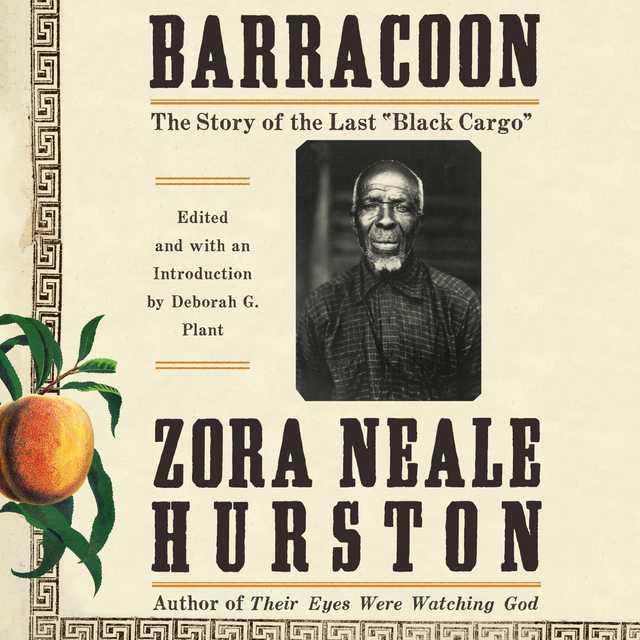









![American Defiance [Dramatized Adaptation]](https://speechify.com/audiobooks/wp-content/uploads/sites/29/2023/06/pr_eaudio_9781648800658_640px.jpg)
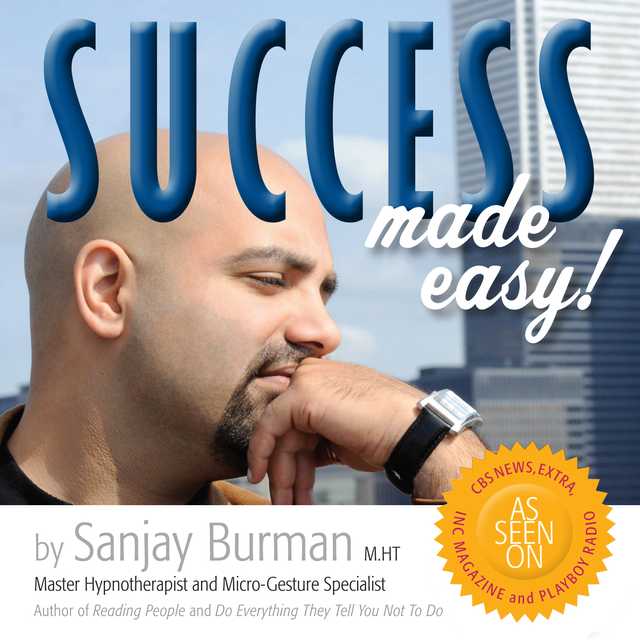
![Alcatraz Versus The Scrivener’s Bones [Dramatized Adaptation]](https://speechify.com/audiobooks/wp-content/uploads/sites/29/2023/06/pr_eaudio_9781648812040_640px.jpg)

